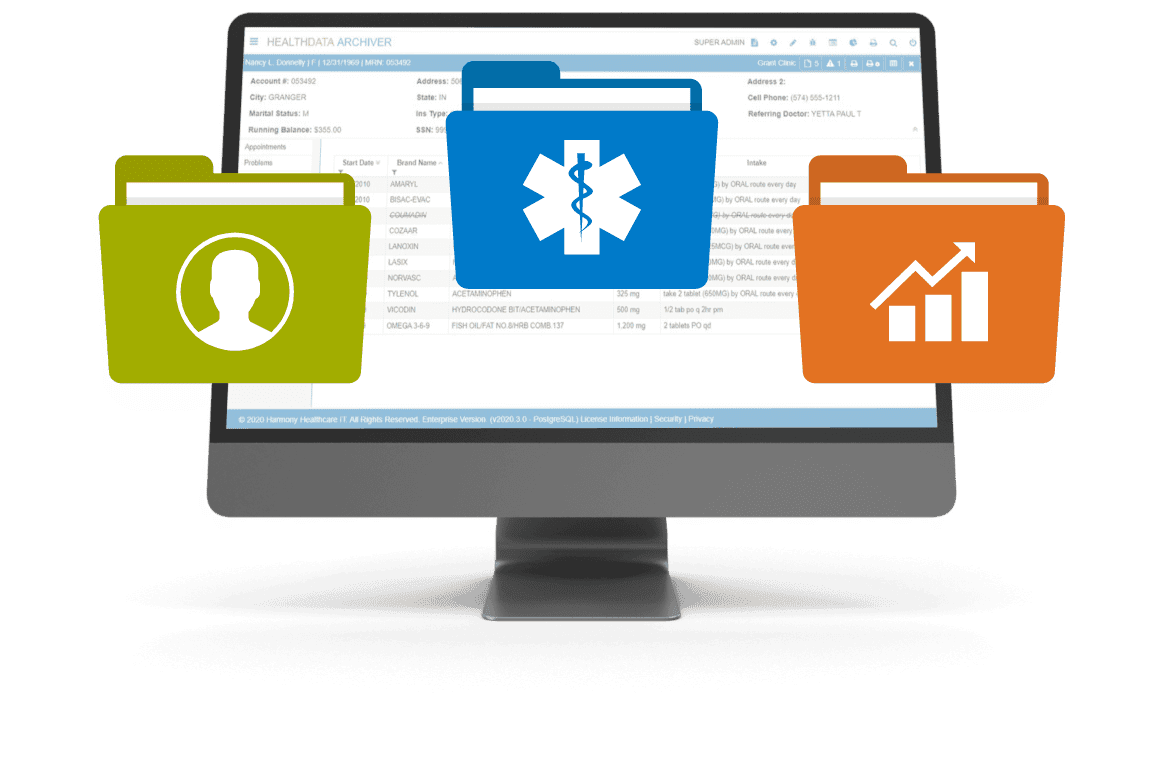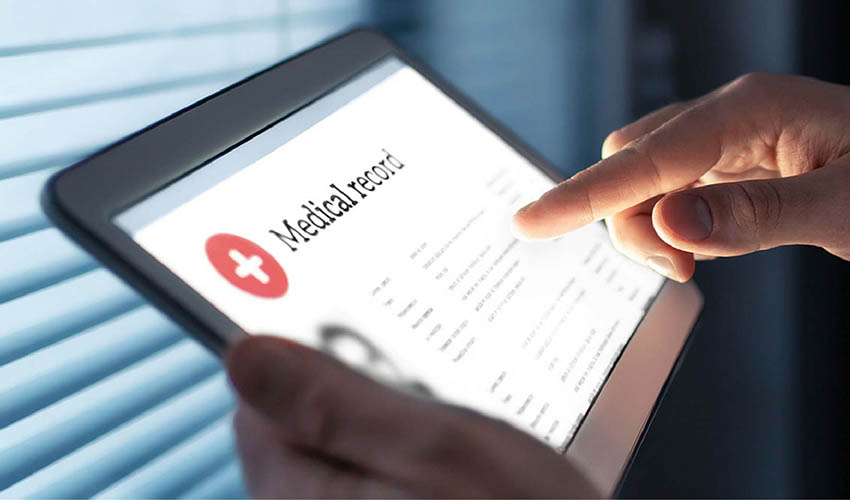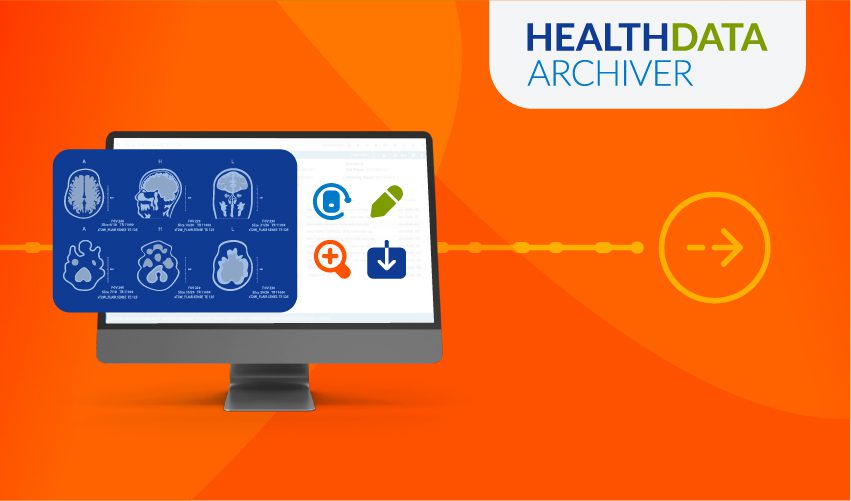HealthData Archiver®
Integrated, Secure Historical Record Access.
HITRUST Certified, HIPAA-compliant storage of patient, employee and business data from legacy software—with access workflows for users across the organization.

Active Archive with
User-Friendly Workflows
HIM
Release of Information, Addenda, Purge and Other Workflows
Clinical
Patient-Context Single Sign-On Access from the Go-Forward EHR
Revenue Cycle
Collection Workflows and Agency Management for A/R Wind Down
Human Resources
Access to Employee Records: W2s, Payroll, OSHA, Attendance & More
Features
A/R Management
Post charges, adjustments, and refunds to wind down archived patient A/R records with Transaction Posting Module. When bundled with Collection Agency Management, receives and auto-posts inbound transaction files from outsourced collection agencies. Comprehensive HealthData AR Manager® is available for more robust wind down capabilities.
Clinical Views
View or share lab results, flow sheets, growth charts or other clinical data to make informed care decisions.
Search
Search across structured data to fetch clear and concise results.
Data Views
Group, expand or collapse data and document categories for optimal user display preferences.
Error Correction and Alternate IDs
Strike-thru errors, upload addenda and link duplicate accounts to ensure accurate record storage.
Standard Reporting
Generate standard audit reports with record access date and time stamps at the user or patient level.
DICOM Viewer
HealthData Archiver® is able to provide a complete cloud based medical image archive that includes a comprehensive DICOM Viewer in the standard Digital Imaging and Communications in Medicine image format. This solution supports multiple modalities including radiology, cardiology, oncology and more.
Notes and Comments
Create and store unlimited notes and make comments according to HIPAA requirements.
Release of Information (ROI)
Filter records and use templates to efficiently comply with ROI requests on-demand or in-bulk.
Role-based Security and Access Tracking
Restrict and audit user activities by individual user, role, group, and/or data source. Includes Break the Glass capabilities.
Sort and Filter
Quickly configure your views to search across multiple data points with easy to use sorting and filtering.
Replacing Software?
Talk to the Experts.
Convert, migrate and archive data with the industry leaders.
Integrations
Single Sign-On from EHR
Eliminate the need for manual login by seamlessly connecting clinicians from the active EHR, in context, to the patient’s historical medical record. Available for most major EMR brands. Oauth/OpenID, Advanced Encryption Standard (AES), Security Assertion Markup Language (SAML 2.0) and other formats supported.
Legacy Record Indicator
Provides a visual cue in the EHR signaling when there are patient records linked in the active archive, HealthData Archiver® (currently available for Epic). This advanced feature empowers healthcare providers with immediate knowledge that a historical patient record is present, saving time and clicks.
MPI Backload
Link historical patient records to a Master Patient Index (MPI). This greatly reduces manual or fuzzy logic patient matching, thereby increasing patient context accuracy when accessing patient records via Single Sign-On and establishing a foundation for interoperability and future integration projects.
MPI Synchronization
After establishing the MPI foundation with historical records in HealthData Archiver®, update the historical patient ID with the go-forward EHR using a form of HL7 to link and unlink records when a merge or unmerge request has taken place, keeping both systems in sync.
Secure Record Delivery
The 21st Century Cures Act requires healthcare providers to provide extensive patient access to their electronic medical records. With Secure Record Delivery, enable the transmission of an archived historical patient chart to a designated EHR endpoint.
Third-Party Auditing
Ensure that archived data within HealthData Archiver® is monitored for unusual activity and compliance through an integrated third-party monitoring platform like FairWarning. The solution captures audit activity from login to logout so administrators can rest assured the privacy and security of protected health information is covered.
ODBC/JDBC Reporting API
Pre-define required reports as a part of the data storage planning process. Connect an ODBC/JDBC reporting, analytics, or business intelligence tool of choice (e.g., Crystal Reports, Qlik, Tableau, Microsoft Power BI, SAP), to make data dictionary and schema available to technical resources who then self-serve on-demand.
Data Export/Sharing
Export legacy data from HealthData Archiver® and share it with population health management applications, data warehouses, APIs, dashboard/visualization tools, HIEs, research teams, and more.
Note: Some features and options shown on this page require additional costs.
A/R Management Options
Transaction Posting Module
Management of patient and collection agency balances.
Collection Agency Management
Management of outsourced agency transactions and balance reconciliation. (Bundled with Transaction Posting Module)
HealthData AR Manager®
Comprehensive management of billing and collections for robust legacy A/R records wind down. Learn more.
Acute Care Community Hospital
MEDITECH Upgrade Requires Legacy Data Storage & Integration
After an upgrade from MEDITECH MAGIC to the 6.1 platform, two years of clinical data was migrated to 6.1, which left more than 20 years of legacy data trapped in silos. The hospital turned to Harmony Healthcare IT for a partner that could archive the legacy records to ensure easy access, A/R wind down of financial records, as well as compliance with regulations.
Organizational Profile
- 200-bed acute care community hospital
- Corinth, MS
- Upgraded MEDITECH MAGIC to 6.1 platform
- Archive of clinical and financial records
- Accounts receivable (A/R) wind down

Large Academic Medical Center
Seamless Data Harmonization and Epic Integration with Harmony Healthcare IT
Transitioning to Epic and growing through merger and acquisition amassed a large portfolio of legacy applications, 3,000 in total. The IDN delivered on its data harmonization goal, by partnering with Harmony Healthcare IT, using HealthData Archiver® with Epic integrations and built-in workflows to support its user needs.
Organizational Profile
- Large academic medical center, Northeast
- Go-forward EHR: Epic
- 100+ archives deployed/in-flight

Regional Nonprofit Health System
Ensuring Compliance: Long-Term Patient Record Access with HealthData Archiver®
Florida sunshine laws required this healthcare system to retain medical records in perpetuity. To ensure compliance with many layers o regulatory requirements, the information technology (IT) governance team at the health system selected HealthData Archiver® to enable long-term and ongoing access to patient records.
Organizational Profile
- Regional nonprofit health system, Florida
- Growth through acquisition
- EHR Archive, Hospital EHR, Allscripts, Ambulatory EHR: Greenway Intergy

Integrated Healthcare System
Efficient Legacy Data Archiving Post-Acquisition with HealthData Archiver®
The acquisition of four hospitals and 83 physician practices resulted in an abundance of legacy systems. Leaving the legacy data dormant on various vendor software applications was not a long-term solution. HealthData Archiver® fulfilled the need to archive the disparate EHR systems without disrupting the level of care that patients had come to know and trust.
Organizational Profile
- Integrated healthcare system, Northeast
- 7 hospitals, ~500 locations
- EHR and financial systems archive
- Transition from various legacy systems to Epic

Key Resources
Explore resources to learn how HealthData Archiver® optimizes legacy data retention and access.










